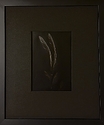Since I am starting to feel as Dense as my negatives have a few questions.
When a negative is described as dense, I would observe that the negative in question is thick - ie when held up to light there are very few areas that are clear (which in turn print dark - right?), and the overall negative will print lighter.
Ont the other hand, when a negative is thin, the over all negative has very few that 'block' light, which in turn means the negative would print darker?
So, if I haven't messed this up so far if many of my negatives were to be described as dense What should my next reaction be relative to film exposure/development? Should I increase/decrease exposure or increase/decrease development time?
Apologize for the basic nature of the questions, somehow I keep struggling with exposure concepts.
Thanks for the input in advance.
When a negative is described as dense, I would observe that the negative in question is thick - ie when held up to light there are very few areas that are clear (which in turn print dark - right?), and the overall negative will print lighter.
Ont the other hand, when a negative is thin, the over all negative has very few that 'block' light, which in turn means the negative would print darker?
So, if I haven't messed this up so far if many of my negatives were to be described as dense What should my next reaction be relative to film exposure/development? Should I increase/decrease exposure or increase/decrease development time?
Apologize for the basic nature of the questions, somehow I keep struggling with exposure concepts.
Thanks for the input in advance.






